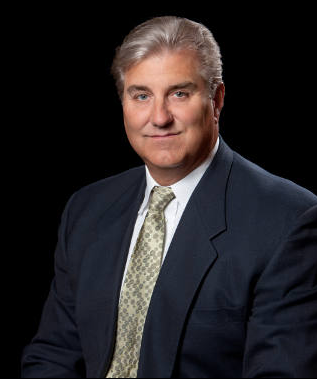Wickert: Court Reminds Us of Need for Subrogation Counsel in Third-Party Actions
Monday, February 13, 2017 | 0
On Aug. 31, 2013, Dan Heimerman was driving in Kansas while employed by Northern Clearing Inc. and was killed when he was rear-ended by a dump truck driven by Zachary Rose and owned by Payless Concrete.

Gart L. Wickert
His son, Lucas Heimerman, a Florida resident, brought a wrongful death claim against Rose and Payless in September 2013 in the U.S. District Court for the District of Kansas. Dan’s wife, Pamela, joined the federal lawsuit in November 2013. Pamela also filed a separate wrongful death claim against Rose and Payless in Kansas State District Court in October 2013.
Pamela was paid $300,000 in workers’ compensation death benefits by Dan’s workers’ compensation carrier, Old Republic Insurance Co., pursuant to its workers’ compensation lien under § 44–504 against any third-party recovery Pamela might obtain. For some reason, however, Northern did not intervene in the federal lawsuit.
The federal lawsuit settled and damages were apportioned between the mother and the son. Pamela received a net recovery of $258,637 from the settlement. In its journal entry of judgment, the federal district court explicitly stated: “Pamela Heimerman and her attorney shall satisfy any and all valid liens, including the worker’s compensation lien pursuant to K.S.A. § 44-504.”
Pamela did not seek apportionment in federal court of her claims for loss of consortium and loss of spousal services. Pamela unsuccessfully attempted to negotiate a resolution with Northern regarding its workers’ compensation lien. In June 2015, Northern intervened in the Kansas state court case based on its lien.
Pamela filed a motion for apportionment in state court pursuant to K.S.A. § 44–504(b), arguing the validity of Northern’s lien had never been addressed by a court, and the money received for her claims for loss of consortium and loss of spousal services were not subject to the lien. The state court found her claim was settled in federal district court without any apportionment, and she was bound by the decision of the federal district court.
Upon receipt of the decision from the state court, Pamela filed a motion before the federal court asking for the closed case to be reopened. She requested the federal district court conduct an evidentiary hearing to address the validity of the workers’ compensation lien. In her motion, Pamela claimed no court had determined the validity of the workers’ compensation lien held by Northern.
The federal court found Pamela’s decision to rely on the state court to try the validity of Northern’s claim was a tactical decision. It further found: “This case does not present the exceptional circumstances necessary to allow Mrs. Heimerman to renew litigation in this closed case.” Pamela appealed.
The Kansas Court of Appeals affirmed, agreeing with the trial court as having properly recognized the federal court’s decision and declined to modify the negotiated settlement. In order to avoid the lien’s attachment, Pamela should have asked the federal court — since it determined the third-party’s liability — what portion of her proceeds reflected damages for loss of consortium and loss of spousal services when it approved the apportionment of the proceeds between Pamela and her son. She failed to do this.
The Court of Appeals gave us some valuable tidbits of subrogation law in its decision. It stated that there is no statutory requirement that a workers’ compensation carrier file a notice of lien in order to be subrogated to a recovery from a third party. Such subrogation and creation of a lien occurs automatically under K.S.A. § 44–504(b). Therefore, when a carrier pays workers’ compensation benefits under K.S.A. § 44–504, a lien is automatically created.
Because Old Republic paid workers’ compensation death benefits to the wife pursuant to K.S.A. § 44–504, it had a valid lien pursuant to K.S.A. § 44–504(b). This can be of tremendous help when your workers’ compensation lien is quite small and perhaps does not merit intervention or engaging subrogation counsel. However, carriers beware: Kansas law is chock full of traps and pitfalls for the unrepresented carrier. In this case, the plaintiff’s attorney dropped the ball. Most carriers in this situation will not be so fortunate.
Kansas workers’ compensation law provides that a carrier is not entitled to any third-party recovery that flow from non-economic damages. Naturally, unrepresented carriers will inevitably be faced with gerrymandered settlement agreements purportedly assigning most or all of the recovery to pain, suffering, mental anguish, etc., so as to avoid repaying any part of your lien. Only active intervention by subrogation counsel can avoid this clear loophole in Kansas law.
In addition, employer negligence, whether it exists or not, will almost always be alleged by the plaintiff. In Kansas, when the employer is partially at fault, something known as the “Brabander Formula” allows the plaintiff to creatively argue that your lien should be reduced by the percentage of the total recovery, which the percentage of employer negligence represents. In other words: Subrogation recovery equals lien minus (damage award x % of employer’s negligence).
One can only imagine the high percentages of fault that will be attributed to the employer if the carrier is not represented. It is a license to steal. In addition, without subrogation representation, be on the lookout for precisely what the wife in this case failed to do: seek the court’s blessing that a large portion of the third-party recovery be allocated to the wife’s loss of consortium, to which the workers’ compensation carrier is not subrogated and is not entitled to reimbursement.
Worse yet, even if the workers’ compensation lien is small and you opt to not engage subrogation counsel, the future credit — often the most important result of the subrogation effort — will also be reduced by the Brabander Formula. When third-party cases settle relatively quickly after the date of loss, be on the alert for situations such as this. They cost Kansas employers and carriers millions every year.
The Court of Appeals added the following for good measure: “As this court noted in Ballard, a party may not avoid satisfying an employer’s lien based on claims of loss of consortium and loss of spousal service where a court has not made a determination on those claims.” In this case, it could have been the federal court or the state court. However, because the federal court was the presiding court, it should have been capable of determining and allocating the third-party recovery.
The Court of Appeals also reminded us that, in cases where settlement is done without the court allocating the various elements of damages, the workers’ compensation lien attaches to all of the settlement funds.
The upshot of the Heimerman decision is, “better late than never.” The workers’ compensation carrier intervened late into both of the third-party actions. Thankfully, the plaintiff’s attorney was asleep at the switch. Had he acted quickly to gerrymander the settlements so as to avoid repayment of the workers’ compensation lien, the result could have been much different.
Gary Wickert is a partner with the Matthiesen, Wickert & Lehrer law firm in Hartford, Wisconsin. This blog post is reprinted with permission.




Comments